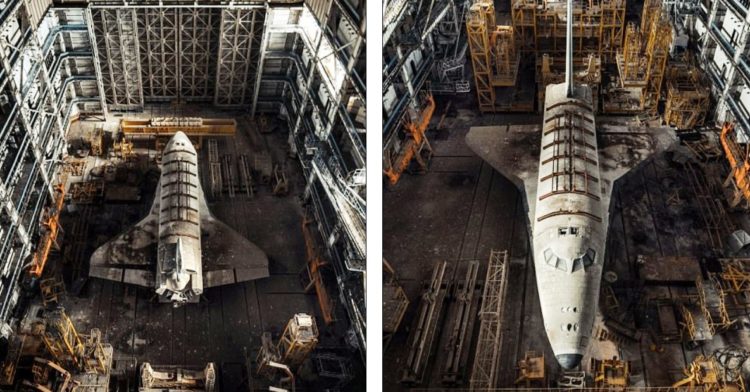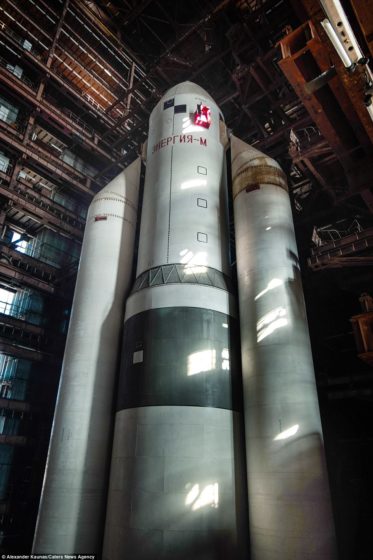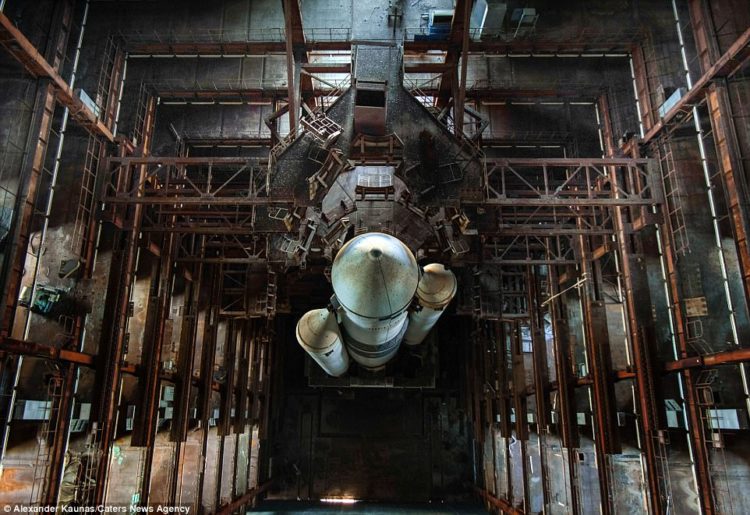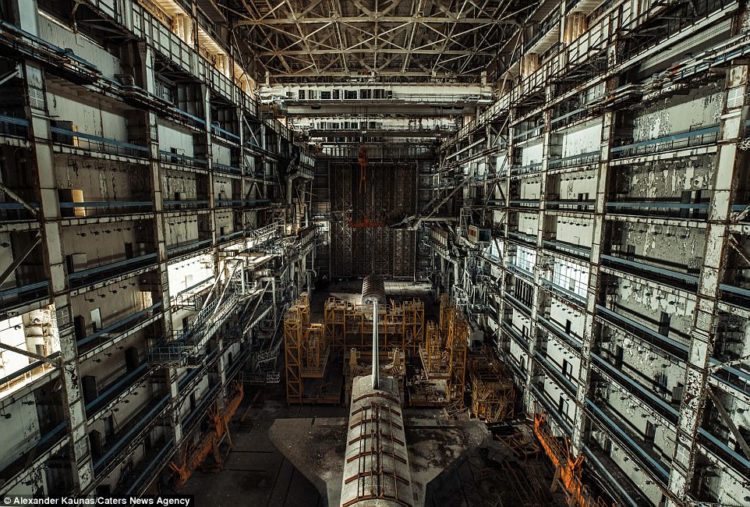Soviet-era Shuttles Left to Rust in an Abandoned Deseret of Kazakhstan. This must be called “Ghosts of the USSR” as eerie photographs show Soviet-era space shuttles left to rust in an abandoned desert hangar in Kazakhstan. Two test shuttles were found inside a derelict Soviet warehouse near the Cosmodrome Baikonur, 125 miles east of the Aral Sea.
Both were developed as part of Moscow’s Buran program which was shut down in 1993 – but neither of the craft was sent to space. Another vast Energia rocket was designed to propel the Buran, an unmanned space plane, into orbit. The main purpose of the rocket was to compete with Nasa’s Saturn V, the super-lift launch vehicle that supported the Apollo mission to the moon.
The Energia weighs in at a huge 2,400,000kg in spite of being made of super-light metals. The massive hangar that houses the rocket was actually an assembly complex and, measuring 433ft long by 203ft in height, it is the largest building at the Baikonur Cosmodrome.
The Russian Alexander Kaunas said, he walked almost 24 miles through the desert to reach the hangar once a hub of activity but now left derelict, and picture the unused shuttles and rocket. Therefore, just like Nasa’s Space Shuttles, the Buran vehicles had engines located at the back, and two wings for a controlled landing back on Earth.
The Russian model had conspicuous external similarities to the US Space Shuttle Columbia sparking suggestions Cold War espionage may have played a part in its development. So, both US Space Shuttles and Buran had the same shape and size, the same vertical tail structures, and even alike colors in white with black trim.
Documents from the 1990s revealed, the KGB stole the designs for the US shuttle in the 1970s and 1980s enabling the Kremlin to build a carbon copy of the American system. Documents acquired dealt with airframe designs, materials, flight computer systems, and propulsion systems. This information allowed Soviet military industries to save years of scientific research and testing time as well as millions of rubles as they developed their own very similar space shuttle vehicle.’
Moreover, the development of the Buran program started in 1976, with the recyclable spacecraft capable of performing operations in orbit before returning to Earth. But after one unmanned spaceflight of the Orbiter 1K1 in 1988, the scheme was scrapped following the dissolution of the USSR in 1993.
Orbiter 1K1 was crushed and destroyed in the same complex – but in a different hangar – in 2002. The collapse killed eight workers. The rocket Kaunas was to act as a heavy-lift launch system and booster for the Buran spaceplane. Thus, it has been left abandoned in the disused hangar since 1991.










